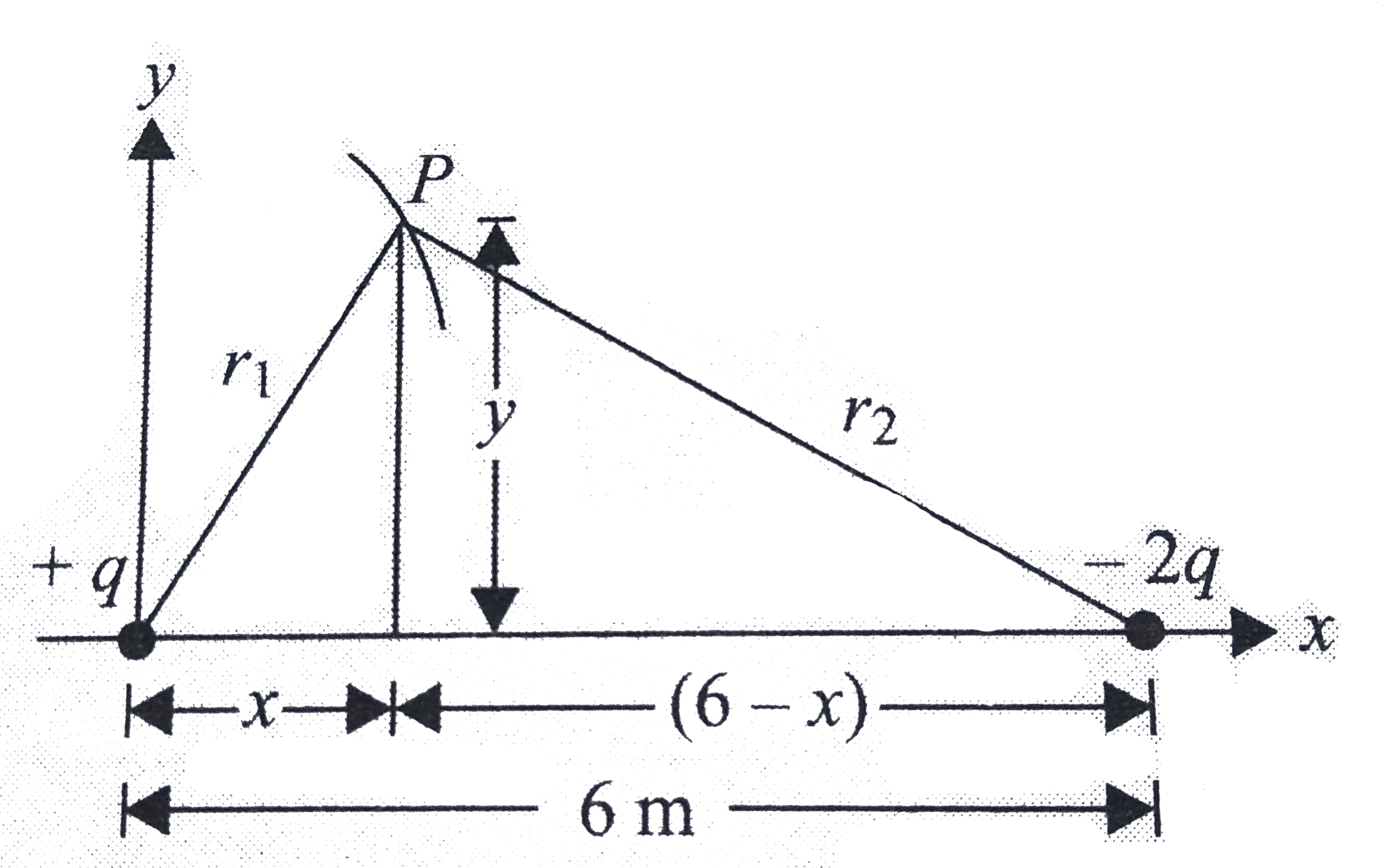In the arrangement shown in fig. The two point charge are in equilibrium. The infinete wire is fixed in the horizontal plane, and the two point charges are placed one above and the other below the wire. Consifering the gravitational effect of the earth, the nature of q1 and q2 can be

q1→ positive, q2→ positive
q1→ positive, q2→ Negative
q1→ Negative, q2→ negative
q1→ Negative, q2→ positive
The correct Answer is:B, C
just draw the free-body diagram of both charge paticles and see whether force cam be zero or not on the particle. At least, one force should be opposite to others.
Topper's Solved these Questions
- COULOMB LAW AND ELECTRIC FIELDBook:CENGAGE PHYSICSChapter:COULOMB LAW AND ELECTRIC FIELDExercise:Comprehension
Explore 25 Videos
- COULOMB LAW AND ELECTRIC FIELDBook:CENGAGE PHYSICSChapter:COULOMB LAW AND ELECTRIC FIELDExercise:Integer
Explore 8 Videos
- COULOMB LAW AND ELECTRIC FIELDBook:CENGAGE PHYSICSChapter:COULOMB LAW AND ELECTRIC FIELDExercise:Single Correct
Explore 47 Videos
- COMMUNICATION SYSTEMBook:CENGAGE PHYSICSChapter:COMMUNICATION SYSTEMExercise:QUESTION BANK
Explore 19 Videos
- Current ElectricityBook:CENGAGE PHYSICSChapter:Current ElectricityExercise:QUESTION BANK
Explore 40 Videos
Similar Questions
Knowledge Check
In front of an earthed conductor a point charge +q is placed a shown in figure
 AOn the surface of conductor the net charge is always negativeBOn the surface of conductor at some points charges are negative and at some points charges may be positive distributed non uniformlyCInside the conductor electric field due to point charge is non zeroDNone of these
AOn the surface of conductor the net charge is always negativeBOn the surface of conductor at some points charges are negative and at some points charges may be positive distributed non uniformlyCInside the conductor electric field due to point charge is non zeroDNone of theseIn the arrangement shown in fig. two positive charges, +Q each,are fixed. Mark the correct statement(s) regarding a third charged particle q palce at the midpoint P that can be displaced along or perpendicular to the line connecting the charges.
 AThe particle will perform SHM of x<<a.BThe particle will oscillate about P but oscillate about P but not harmonically for any x.CThe particle will perform SHM for y<<a.DThe particle will oscillate about P but not harmonically for y comparable to a.
AThe particle will perform SHM of x<<a.BThe particle will oscillate about P but oscillate about P but not harmonically for any x.CThe particle will perform SHM for y<<a.DThe particle will oscillate about P but not harmonically for y comparable to a.Two point charges (Q each are placed at (0,y) and (0-y) A point charge q of the sme polarity can move along the x-axis. Then
Athe force on q is maximum at x=±y/√2Bthe charge q is in equilibrium at the originCthe charge q performs an oscillatory motion about the originDfor any position of q other than origin the force is directed away from origin
The electric lines of force of two point charges are shown in fig. What is the value of the ratio q1/q2 ?

View SolutionCharges Q and -2Q are placed at some distance. The locus of points in the plane of the charges where the potential is zero will be :
View SolutionTwo electric charges qand−2q are placed at a distance 6 m apart on a horizontal plane. Find the locus of point on this plane where the potential has a value zero.
 .
.
View SolutionTwo equal negative charges are fixed at points and on y-axis. A positive charge Q is released from rest at the point on the x-axis. The charge Q will:
View SolutionTwo points charges +4q and +q are separated by distance r, where should a third point charge Q be placed that the whole system remains in equilibrium
View Solution


